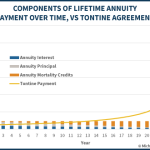Enjoy the current installment of "weekend reading for financial planners" - this week's edition kicks off with a new industry white paper finding the ongoing shift of advisor compensation from commissions to fees has reached a crossover point, where fees now top commissions as the primary advisor revenue source (as trend that may only accelerate as the Department of Labor's fiduciary proposal rolls out later this year).
From there, we have a number of practice management articles this week, including: a look at the history of the Rule 206(4)-1 limitation against testimonials and what to watch out for; tips on communication not with potential new clients but existing ones; a look at what advisors serving ultra-high-net-worth clients are providing as "value-added" services; a review of how some value-added services and "perks" are being adopted by a wider range of advisory firms (not just those serving the super-rich); and a look at how mutual fund fees continue to be squeezed, and whether an advisor's AUM fee may be next (though the short answer is "no", probably not, because it's still so hard to comparison-shop advisors!).
We also have a couple of technical articles this week, from a look at the latest research on retiree spending patterns which finds that affluent clients tend to under-spend in retirement (creating a "consumption gap" between what they could spend and what they actually do), a look at the coming Actuarial Guideline 49 rules next month that will curtail the return assumptions used in sales illustrations of equity-indexed Universal Life (and whether the policies may still be over-projected), and a review of the Qualified Charitable Distribution (QCD) rules from IRAs now that they've been made permanent by last December's "Tax Extenders" legislation.
We wrap up with three interesting articles: the first is a look at why, despite all the ongoing warnings of disruption, big companies continue to get disrupted by start-ups that build on top those big companies' existing technology or service stack; the second is a look at the concept of "Deep Work" and how Bill Gates had incredible productivity by being able to apply an intense focus for extended periods of time; and the last explores how the biggest factor that drives our success is our personal engagement with what we're looking on (and how to refine it if you're not feeling fully engaged yourself).
And be certain to check out Bill Winterberg's "Bits & Bytes" video on the latest in advisor tech news at the end, which this week includes a playlist of all the video highlights from his live coverage of the TD Ameritrade LINC National Conference!
Enjoy the "light" reading!








